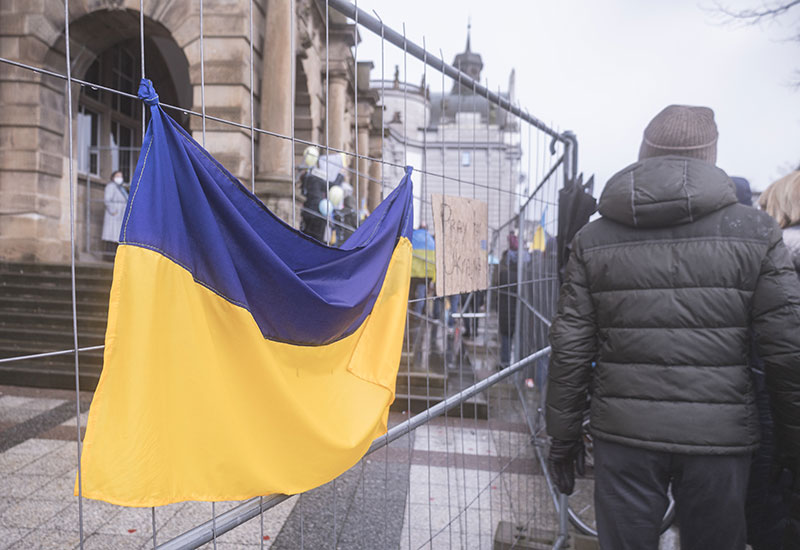
26 Mar The Warring 20s
If the 1920s were the “Roaring 20s” we should expect a particularly brash moniker to emerge for the young, boisterous 2020s. A global pandemic, an insurrection in the capitol of the world’s oldest democracy, these crises apparently weren’t enough for this decade to hang its hat on. Now it brings us a land war in Europe. While financial markets, and people more generally, have proven to be quite resilient in the face of those earlier challenges, Vladimir Putin’s invasion of Ukraine feels different, invoking the specter of a mostly forgotten peril, nuclear war.
Nervousness comes naturally in times like these, and we want to address your concerns thoughtfully and directly. We will not pretend to have all the answers. We have been reading, like many of you probably, expert opinions about what the war will bring. While interesting and necessary, these views fall short of a reliable forecast – something we can use as the basis for a change in our investment positioning. Each expert opinion seems to come down to one thing, understanding what Vladimir Putin will do next. Ironically, the experts who impress us the most are the least certain. The fact is, the war in Ukraine has not proceeded as Putin expected. It’s more likely than not, therefore, that even he doesn’t know what he will do next or how far he will ultimately take this misadventure, if he is not stopped.
Most policy experts now think the most likely scenario is a protracted conflict in Ukraine, with Russia taking control of much of the country but suffering losses sufficient to derail further acts of aggression. But the possible range of outcomes is wide. We do know that we will be faced with some period of very high energy prices and inflation. This was actually part of our base case entering the year and we positioned client portfolios for that. Unfortunately, we also anticipated strong global economic growth as the economy continued to recover from the pandemic shutdowns. A prolonged conflict introduces the possibility that high energy costs and long-lasting economic sanctions will lead to negative economic growth, or recession. This explains the 6% drop in the S&P 500 since the invasion, with some overseas markets like Germany faring much worse because they are more exposed to rising energy prices and more at risk of recession.
It is arguable that the market has yet to price in an even more dire scenario, one that might include an escalation that results in direct military conflict – or worse – between Russia and NATO. We could certainly see a further market drop in that event. [1] We know that in times like these many of our clients instinctively want to retreat from the market and wait it out. Sometimes the move that seems safest is actually the riskiest one. If we take this action and guess wrong with the market actually going up – or if we guess right but fail to get back in time before the market recovers – we will suffer a permanent loss of those gains. If the missed opportunity is large enough, we put our clients’ financial plans at risk.
It is specifically for times like these that we have constructed our clients’ portfolios and financial plans – so they are able to endure even deep and extended market downturns. We do not have a crystal ball and cannot predict the future, but experience tells us to be courageous and stick to the plan. So, let’s draw inspiration from the amazing Ukrainian people and act on our braver, better instincts.
[1] There is another, more optimistic scenario, that the market is also not pricing: that Putin suffers a humiliating defeat and retreats back to Russia (a sub-variant would be the “Lindsay Graham Scenario” where Putin gets taken out in a coup). From a market perspective, this outcome would put us back in line with our base case starting the year, global economic growth coupled with rising rates. The market would surely rally in that event.


